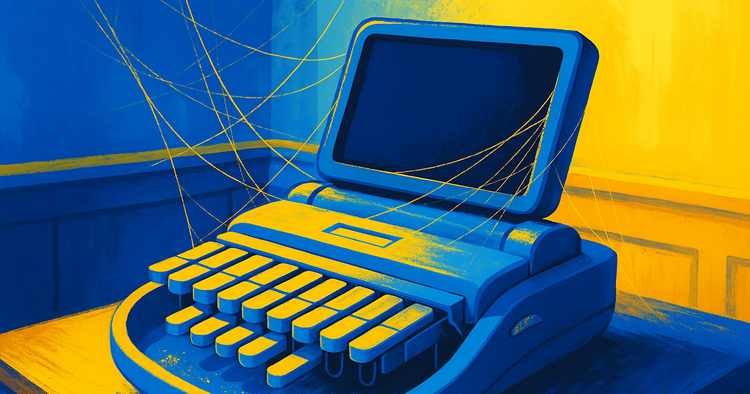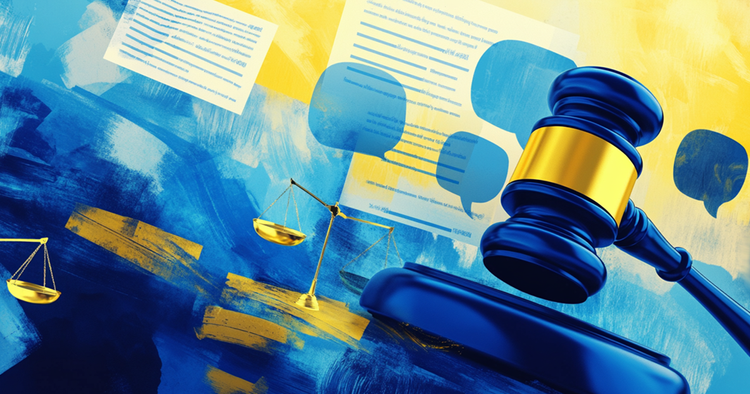The History and Evolution of Court Reporting

What does it mean to be a “guardian of the record?” Coined by author and lawyer Herbert C. Hallas, the term refers to court reporters, people who convert spoken word into written form. Court reporters are an indispensable component of modern society—working in various industries and increasing accessibility. In legal practice, they’re the people behind transcripts, ensuring that every word spoken is accurately recorded.
The profession has changed alongside technology, from handwritten shorthand to stenotype machines and, more recently, digital and AI-assisted transcription. While methods have changed, the core mission remains the same: to create precise, reliable records that uphold the integrity of legal proceedings. Understanding the history of court reporting provides valuable insight into how these professionals continue to adapt to modern demands while maintaining the highest standards of accuracy.
The Origin of Stenography
Stenography is one of the oldest careers, beginning in 450 BC and dating back to ancient Mesopotamia and China. What we see now in transcription descends more directly from ancient Rome and Greece, with both cultures having scribes who invented shorthand to capture spoken words quickly.
Modern stenography, the practice of writing down spoken words quickly and accurately using shorthand or a stenotype machine, was done manually for several centuries. Stenographers relied heavily on shorthand to capture speech and were primarily used in business and literary contexts. As stenography began to be utilized in other industries, the profession found its foothold in the legal sector, where preserving the record was imperative. Demand for more efficient court reporting methods grew alongside the need for transcriptionists.
Miles Bartholomew invented the first stenograph machine in 1877, and the shorthand machine was later introduced in U.S. courtrooms by Walter Heironimus, who served as a court reporter in the infamous Lindbergh trial of 1933. Initially, court reporters struggled with the complexity of shorthand and the stenograph machines, but as the broadcast, political, and legal industries evolved, so did the need for advancement in court reporting technology.
The Digital Revolution in Court Reporting
The late 20th century ushered in a seismic shift in court reporting with the advent of Computer-Aided Transcription (CAT) systems. These systems revolutionized transcription by converting shorthand notes into text, vastly improving efficiency and accuracy. Stenographers could now use specialized software to translate keystrokes into readable transcripts, reducing the time spent manually converting shorthand.
In the 1980s and 90s, digital recording technology emerged, offering an alternative to traditional stenography. Courtrooms began incorporating audio and video recording systems to capture proceedings, complementing—or, in some cases, replacing—stenographers. This transition was met with mixed reactions. While digital recording provided a verbatim record, it lacked the immediate accuracy and contextual awareness of trained court reporters who could clarify speech and filter out extraneous noise.
As the internet age progressed, real-time transcription became increasingly accessible. Stenographers using CAT could produce live captions for trials, depositions, and even television broadcasts, making legal proceedings more transparent and accessible. The demand for instant transcription pushed the industry toward further innovation, setting the stage for the next phase of evolution in court reporting.
Modern Court Reporting and Emerging Technologies
Today, the court reporting ecosystem is more diverse than ever. Traditional stenographers, digital court reporters, and AI-driven transcription services all play roles in capturing the official record. Stenographers remain highly valued for their expertise in producing real-time transcripts, while digital reporters use high-fidelity recording equipment and later transcribe proceedings manually or with the assistance of AI tools.
The introduction of voice recognition and speech-to-text technology has significantly impacted the field. Advanced AI models can transcribe speech with remarkable speed and accuracy, making legal transcription more efficient than ever before. However, even the most sophisticated AI solutions still require human oversight to ensure accuracy.
AI-powered legal transcription tools, such as those developed by Prevail, enhance efficiency by quickly generating searchable transcripts. These tools can recognize multiple speakers, capture complex legal terminology, and provide an immediate text record. While AI continues to evolve, human court reporters remain crucial for maintaining the integrity of legal proceedings—verifying accuracy and handling nuances that technology alone can’t fully grasp.
The Future of Court Reporting
The legal industry is experiencing a digital transformation, and court reporting is no exception. As technology advances, the demand for trained, skilled professionals who can navigate traditional and digital methods is growing. Stenography schools and certification programs are adapting to include training in AI and digital transcription technologies, preparing the next generation of court reporters for a hybrid future.
One of the biggest challenges facing the legal field is the shortage of trained court reporters. As veteran stenographers retire, fewer new professionals are entering the industry, creating an increasing reliance on digital and AI-driven solutions. This shift underscores the importance of balancing technological advancements with human expertise.
AI transcription can enhance accuracy, reduce turnaround times, and make legal documentation even more accessible. However, organizations and governing bodies will play a critical role in setting standards for using AI in court reporting, ensuring that the quality and integrity of transcripts remain uncompromised.
Balancing Tradition and Technology
From the earliest shorthand systems to the rise of AI-assisted transcription, court reporting has continuously evolved to meet the needs of the legal system. While technology has transformed how court reporting is conducted, it hasn’t diminished the need for skilled professionals. Instead, it has created new opportunities for efficiency, accessibility, and innovation. As legal transcription evolves, the expertise of court reporters—whether using digital recording tools or AI-powered software—remains indispensable in upholding the integrity of the judicial process.




